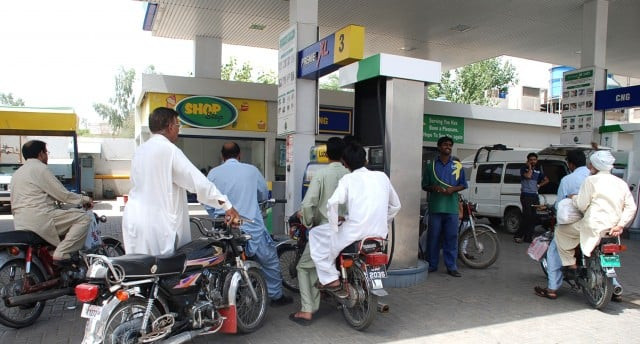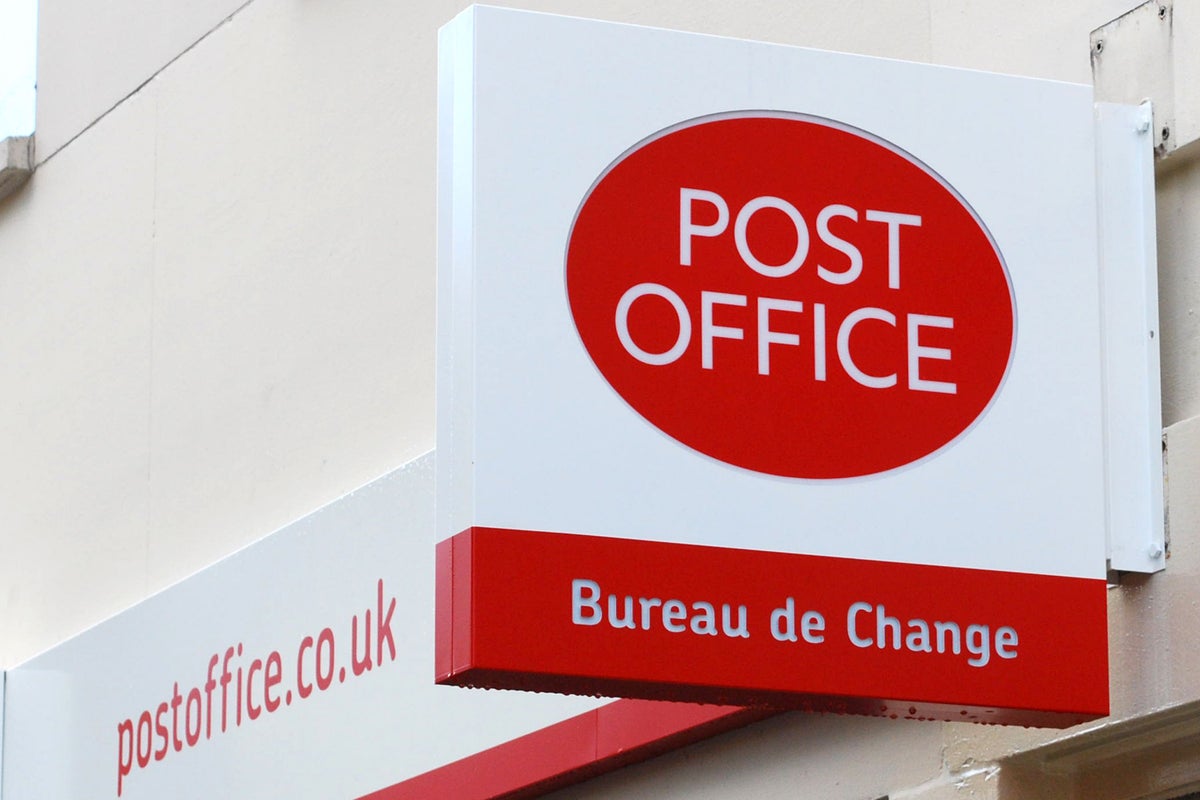Business
Petrol prices in Pakistan may rise from September 16 | The Express Tribune

Petrol prices in Pakistan could increase by up to Rs1.54 per litre from September 16, while high-speed diesel may rise by Rs4.79, industry sources said on Saturday.
Preliminary calculations also indicate kerosene could climb by Rs3.06 and light diesel by Rs3.68 per litre.
The Oil and Gas Regulatory Authority (OGRA) will send its final working to the Petroleum Division on 15 September.
The Petroleum Division and Ministry of Finance will then forward the proposal, including levies and taxes, to the prime minister for approval.
New rates will take effect after the prime minister’s consent.
Read: Food prices soar in Lahore as floods disrupt supply
On September 1, the federal government announced a Rs3 per litre reduction in the price of high-speed diesel (HSD), while keeping the price of petrol unchanged for another fortnight.
According to an official notification issued by the Finance Division, the revised petroleum prices came into effect at midnight (September 1, 2025) and will remain applicable for the next 15 days.
Following the adjustment, the price of HSD has been brought down from Rs272.99 to Rs269.99 per litre. The price of petrol, however, remains unchanged at Rs264.61 per litre.
The changes follow the government’s routine fortnightly review of international oil prices and exchange rate movements.
Other petroleum products also saw slight reductions. The price of superior kerosene oil was lowered by Rs1.46, from Rs178.27 to Rs176.81 per litre.
Similarly, light diesel oil dropped by Rs2.40, now priced at Rs159.76 from the earlier Rs162.37 per litre.
The revised pricing comes amid global crude benchmarks, where motor gasoline premiums currently stand at $6.37 per barrel and HSD premiums at $3.20 per barrel.
Domestic pricing also factors in the Inland Freight Equalisation Margin (IFEM)—Rs8.05 per litre for petrol and Rs6.20 for diesel—as well as the Petroleum Levy (PL) and the Climate Support Levy (CSL), components that significantly influence retail fuel costs.
This is the second consecutive fortnight during which the government has kept petrol prices unchanged while reducing the prices of other petroleum products by up to Rs12 per litre.
On August 15, the federal government cut the price of high-speed diesel (HSD) by Rs12.84 per litre. Similarly, the prices of superior kerosene oil and light diesel oil were also reduced by Rs7.19 and Rs8.20 per litre, respectively.
Business
Compensation scheme opens for victims of Post Office Capture IT scandal

A scheme has been launched to compensate victims of the Post Office Capture IT scandal that saw former subpostmasters forced to repay shortfalls.
The Government said those affected can now apply for redress, with those found to be eligible set to receive £10,000 immediately and final awards potentially reaching up to £300,000 after full assessment by an independent panel, or more in certain cases.
The Capture system pre-dated the now infamous Horizon software, which has been responsible for around 1,000 wrongful convictions.
An independent report into faulty accounting system Capture was commissioned last year after subpostmasters said they had suffered similar problems to those faced by the Horizon victims.
The report by forensic accountants Kroll Associates, which concluded there was a reasonable likelihood that Capture – in use at Post Office branches between 1992 and 2000 – created financial shortfalls for postmasters.
In some cases, postmasters resorted to using their own savings to make up the difference.
The scheme will be not be open to postmasters who have criminal convictions related to Capture.
Those who were given criminal convictions must instead go through the Criminal Cases Review Commission, or its Scottish equivalent.
The Government has said it will “ensure that appropriate redress is given” to those where convictions are overturned by the courts.
The compensation scheme will be tested for the first 150 claimants before being rolled out more widely.
Post Office minister Blair McDougall said: “After over two decades of fighting for justice, postmasters and their families will finally receive recognition and recompense for the lives and livelihoods that Capture destroyed.
“I’d like to thank all of those victims who have helped us to design this scheme, allowing us to deliver on our promise of providing redress today.
“We can’t make up for everything they have lost, but today we begin restoring some of the dignity so cruelly taken away by this scandal.”
The Government said the scheme has been designed “hand in hand” with victims, while also taking lessons into account from redress schemes for the Horizon IT Scandal.
So far, more than £1.2 billion has been paid out in compensation to more than 9,000 victims of the Horizon scandal, it added.
Business
ITR Due Date Extended: Businesses Get Time Till December 10, 2025 To File Returns

New Delhi: The Central Board of Direct Taxes (CBDT) has extended the due dates for filing audit reports and Income Tax Returns (ITR) for the Assessment Year 2025–26, giving major relief to businesses, professionals, and firms whose accounts require auditing.
Earlier, the deadline to submit tax audit reports was October 31, 2025, and the corresponding ITR filing deadline was also October 31, 2025. However, considering technical delays and representations from taxpayers and professionals, the CBDT has now extended both these dates.
As per the latest circular, taxpayers who are required to get their accounts audited under the Income Tax Act, 1961 can now file their audit reports by November 10, 2025, instead of October 31. Consequently, the due date for filing the ITR for such taxpayers has also been pushed to December 10, 2025.
This extension applies to companies, Limited Liability Partnerships (LLPs), and other entities whose books of accounts need to be audited. It also benefits professionals and small businesses who were facing difficulties due to late availability of ITR forms and software utilities.
The government’s decision aims to provide adequate time for taxpayers and auditors to ensure accuracy and compliance while reducing last-minute rush and filing errors. The extension also reflects the government’s understanding of the challenges faced by the accounting community, especially with overlapping deadlines for GST audits and other financial filings.
Tax experts advise taxpayers to make the most of this extension by completing audits early and verifying data consistency between GST, TDS, and income tax returns to avoid discrepancies during assessment.
In summary, the new deadlines are:
Audit Report Filing: November 10, 2025
ITR Filing for Audited Taxpayers: December 10, 2025
Missing these dates could still attract penalties and interest, so taxpayers are urged to file well before the final deadline.
Business
Gold Rates Tumble: Investors Shocked, But Jewellery Buyers Have A Reason To Smile

Gold and silver prices have experienced significant fluctuations recently. The US-China trade deal and the strengthening US dollar are the primary factors influencing these movements. Investors tend to reduce their investments in precious metals when market and global geopolitical conditions appear stable, leading to a decline in prices.

On the Multi Commodity Exchange of India (MCX), gold for December fell by Rs 1,546 to Rs 1,21,905 per 10 grams. Last week, which had fewer trading days due to holidays, saw gold prices drop by Rs 3,557 (2.80%). Similarly, silver for December decreased by Rs 1,964 to Rs 1,45,506 per kg.

During the same week, silver prices fell by Rs 9,134. Many traders engaged in transactions involving 12,428 gold bars and 20,367 silver bars. The progress in US-China trade talks has contributed to the declining prices since Friday.

The recent price decline can be attributed to the two-day meeting between US and Chinese leaders in Malaysia. They reportedly reached a consensus on key issues such as export rules and shipping tariffs. As a result, the US-China trade deal and the strong US dollar have diminished the demand for safe-haven assets, leading to a further decline in gold prices.

This week, central banks are expected to make significant decisions regarding interest rates. The US Federal Reserve is likely to cut rates by 0.25%, while the European Central Bank and the Bank of Japan are expected to maintain their current rates. Traders are closely monitoring these developments.

Expert Darshan Desai commented, “We should be prepared for significant fluctuations in the short term. Gold prices may fall further.”
-

 Fashion1 week ago
Fashion1 week agoChinese woman charged over gold theft at Paris Natural History Museum
-

 Tech1 week ago
Tech1 week agoThis Smart Warming Mug Is Marked Down by $60
-

 Entertainment1 week ago
Entertainment1 week agoJohn Grisham unveils his first-ever mystery, “The Widow”
-

 Tech1 week ago
Tech1 week agoEaster Island’s Moai Statues May Have Walked to Where They Now Stand
-

 Fashion1 week ago
Fashion1 week agoThe North Face and Cecilie Bahnsen launch second collaboration
-

 Tech1 week ago
Tech1 week agoOpenAI has slipped shopping into ChatGPT users’ chats—here’s why that matters
-

 Politics4 days ago
Politics4 days agoTrump slams ‘dirty’ Canada despite withdrawal of Reagan ad
-

 Fashion1 week ago
Fashion1 week agoNew EU strategy proposed to shape global clean, resilient transition








